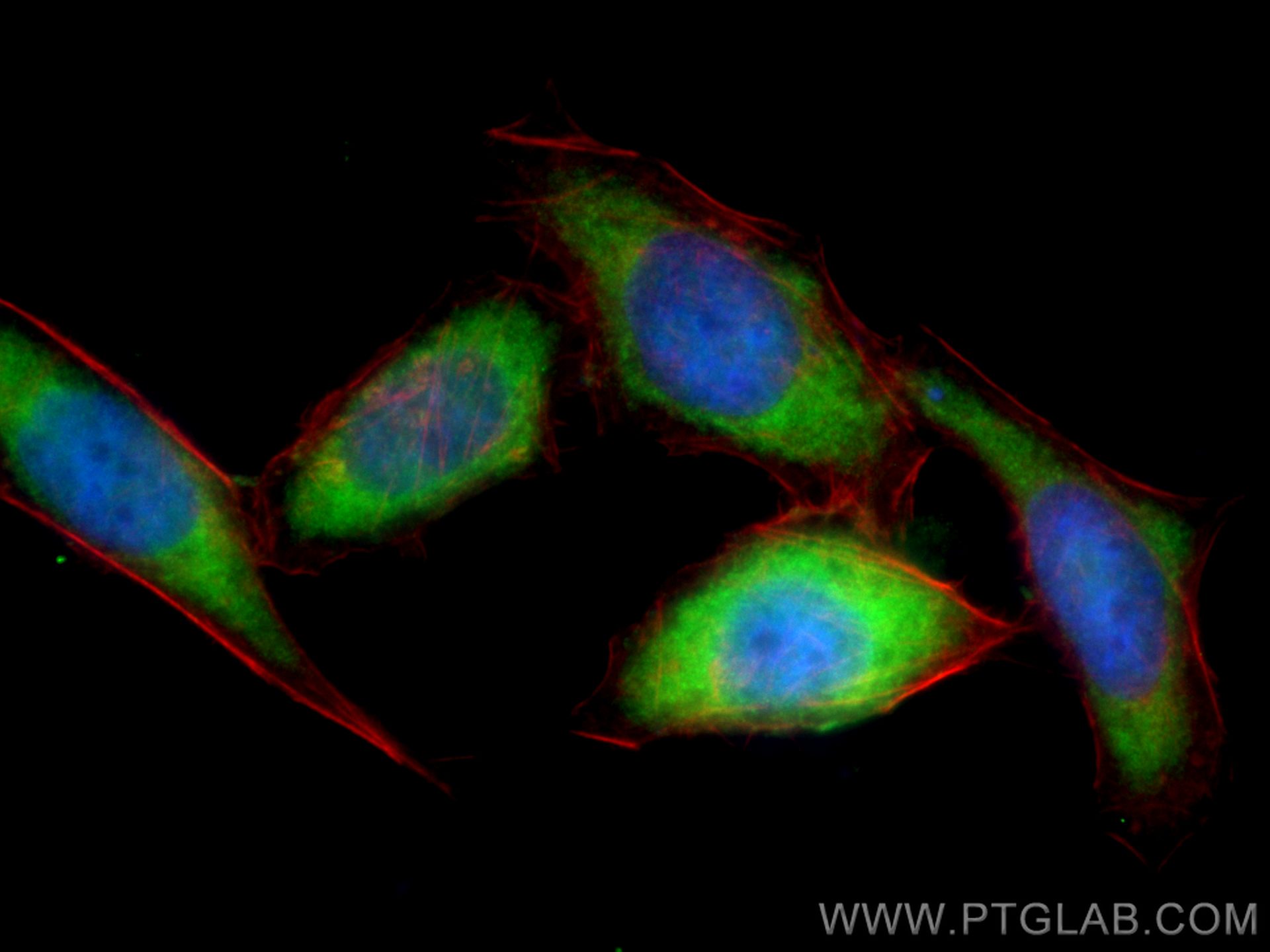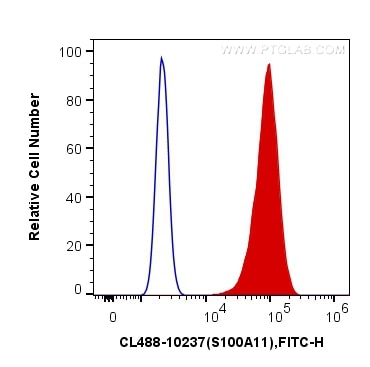- Phare
- Validé par KD/KO
Anticorps Polyclonal de lapin anti-S100A11
S100A11 Polyclonal Antibody for IF/ICC, FC (Intra)
Hôte / Isotype
Lapin / IgG
Réactivité testée
Humain, rat, souris
Applications
IF/ICC, FC (Intra)
Conjugaison
CoraLite® Plus 488 Fluorescent Dye
N° de cat : CL488-10237
Synonymes
Galerie de données de validation
Applications testées
| Résultats positifs en IF/ICC | cellules PC-3, |
| Résultats positifs en FC (Intra) | cellules PC-3, |
Dilution recommandée
| Application | Dilution |
|---|---|
| Immunofluorescence (IF)/ICC | IF/ICC : 1:50-1:500 |
| Flow Cytometry (FC) (INTRA) | FC (INTRA) : 0.40 ug per 10^6 cells in a 100 µl suspension |
| It is recommended that this reagent should be titrated in each testing system to obtain optimal results. | |
| Sample-dependent, check data in validation data gallery | |
Informations sur le produit
CL488-10237 cible S100A11 dans les applications de IF/ICC, FC (Intra) et montre une réactivité avec des échantillons Humain, rat, souris
| Réactivité | Humain, rat, souris |
| Hôte / Isotype | Lapin / IgG |
| Clonalité | Polyclonal |
| Type | Anticorps |
| Immunogène | S100A11 Protéine recombinante Ag0343 |
| Nom complet | S100 calcium binding protein A11 |
| Masse moléculaire calculée | 105 aa, 12 kDa |
| Numéro d’acquisition GenBank | BC001410 |
| Symbole du gène | S100A11 |
| Identification du gène (NCBI) | 6282 |
| Conjugaison | CoraLite® Plus 488 Fluorescent Dye |
| Excitation/Emission maxima wavelengths | 493 nm / 522 nm |
| Forme | Liquide |
| Méthode de purification | Purification par affinité contre l'antigène |
| Tampon de stockage | PBS with 50% glycerol, 0.05% Proclin300, 0.5% BSA |
| Conditions de stockage | Stocker à -20 °C. Éviter toute exposition à la lumière. Stable pendant un an après l'expédition. L'aliquotage n'est pas nécessaire pour le stockage à -20oC Les 20ul contiennent 0,1% de BSA. |
Informations générales
S100A11 (also known as S100C or calziggarin), is a member of the S100 family of proteins containing 2 EF-hand calcium-binding motifs (PMID: 18694925). S100 proteins are localized in the cytoplasm and/or nucleus of a wide range of cells, and involved in the regulation of a number of cellular processes such as cell cycle progression and differentiation. First discovered in 1989, S100A11 has since been proposed to have direct biological functions in an assortment of physiological processes such as endo- and exocytosis, regulation of enzyme activity, cell growth and regulation, apoptosis and inflammation (PMID: 15241500). Chromosomal rearrangements and altered expression of S100A11 have been implicated in tumor metastasis. This S100A11 antibody (10237-1-AP) has also been instrumental in investigations into S100A11's role in the development of brain tumors in tuberous sclerosis complex (TSC) patients (PMID: 20133820).
Protocole
| Product Specific Protocols | |
|---|---|
| IF protocol for CL Plus 488 S100A11 antibody CL488-10237 | Download protocol |
| FC protocol for CL Plus 488 S100A11 antibody CL488-10237 | Download protocol |
| Standard Protocols | |
|---|---|
| Click here to view our Standard Protocols |



